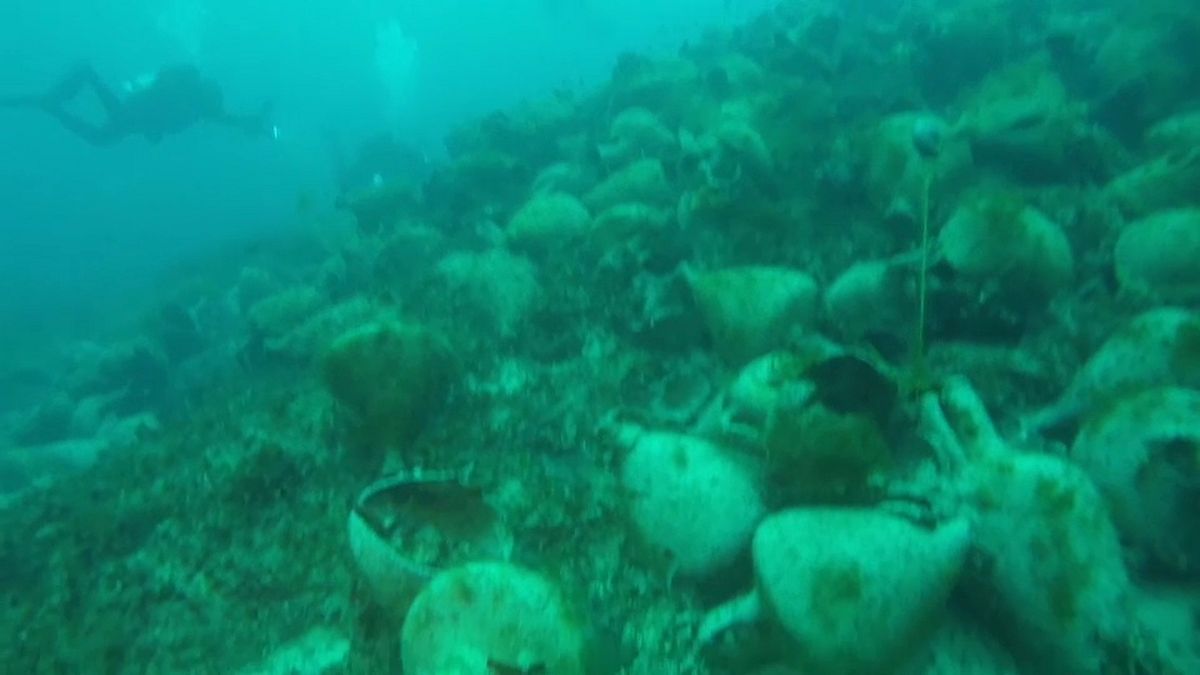The ancient cargo ship sank in the 5th century BC. It was laden with 4,000 ancient vases, probably containing wine, most of which remain intact.
Recreational divers are to be allowed access to the wreck of an ancient cargo ship which sank in the 5th century BC, the first ancient wreck to be made accessible to the public in Greece.
The ship was laden with 4,000 ancient vases called amphoras, probably containing wine, most of which remain intact. All that survives is the cargo, the exposed parts of the wooden ship having long since rotted away.
The Peristera shipwreck was discovered near the northern Greek island of Alonissos in the early 1990s and changed archaeologists' understanding of shipbuilding in antiquity, but experts still don't know why it sank. There are indications a fire had broken out on board, but it's unclear whether that contributed to its sinking.
Fish, sponges and other sea creatures have made the amphoras their home, adding colour and life to the site. In some places, the cargo towers above divers as they pass along the perimeter of the wreck.
Dimitris Kourkoumelis, the lead archaeologist on the project preparing the site for visitors explained its complexities: "Underwater ancient sites and particularly ancient shipwrecks are exposed. They are exposed and fragile, both the ancient ones and the modern ones. So the culture ministry has the institutional and constitutional responsibility to protect these sites."
The Peristera wreck is the largest ship of its time to have been found and its discovery was of major significance to historians.
Elpida Hadjidaki was the first archaeologist to excavate the site. "Up to then, we thought that large ships that were carrying 1,500 amphoras and were up to 70 tonnes, they were built by the Romans in the 1st century BC," Hadjidaki explains.
"Well, now we have a ship that was not built in the 1st century BC, it was built in the 5th century BC, it carried 4,000 amphoras and God knows what else and it's 126 tonnes."
The first test for guided tours of the wreck, which lies at a depth of around 22-28 metres, was carried out recently with small groups of recreational and professional divers.
"It was an amazing opportunity ... to dive at last on an ancient wreck," said Kostas Menemenoglou, a 39-year-old recreational diver from Volos. "It's really like diving into history."
Three other shipwrecks in the Pagasitic Gulf in central Greece are also included in the project, which is part of a European Commission-funded BlueMed program, which plans to expand the project to Italy and Croatia. More test dives will be held this summer and next year, with hopes of fully opening the sites to recreational diving in early 2021.
Hadjidaki says she is thrilled the wreck is being opened to visitors.
"It's fantastic. Twenty-five years ago, I was the first person that proposed that and people thought I was crazy," she said. "Why should we keep it to ourselves? We have to give knowledge to people."
